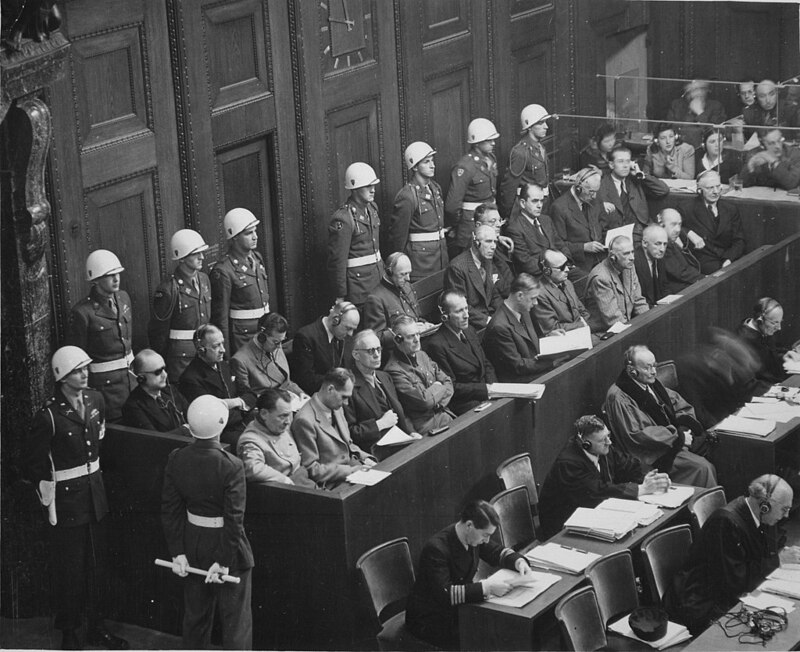On 1 October 1946, the International Military Tribunal residing in Nuremberg, Germany, passed a verdict in the main trial of German war criminals that commenced the previous autumn.
The world had not yet shaken off the traumatizing memory of the bloodbath of WWII, neither had it come to terms with heaps of emaciated corpses shown in newsreels, 8 million NSDAP members, over a million Germans in SS and Gestapo, and countless blood-chilling testimonies of would-be concentration camps victims. Perpetrators of these heinous crimes were not going to be allowed to blend into the society; Germany had to be cleansed before being readmitted into the international community.
Naturally, the principal war criminals – Hitler, Himmler and Goebbels – had chosen suicide, thus escaping the hangman’s noose. The IMT settled for the next best thing: the indictment of 24 major Nazis, their choice reflecting the main areas of the system: the NSDAP (e.g Göring), ideology (Rosenberg), foreign policy (Ribbentrop), economy (Speer), armed forces (Keitel), SS and police (Kaltenbrunner). Of these, 22 ultimately stood trial on charges of crimes against peace, humanity and war crimes.
Each of the four Allied nations – Great Britain, the United States, France and the Soviet Union – appointed a judge and a prosecution team; to convict a defendant, three of the four judges in the panel had to vote guilty. The indicted were provided counsel of their choice. The most common line of defence was the ex post facto objection: that the legal provisions on which the indictments were based penalized the actions committed before these laws were drafted. However, such notion was generally dismissed, since Germany had been a signatory of international conventions regulating the rules of warfare.
With requirements of fair trial satisfied, the judge panel got to work, analysing evidence and hearing witnesses. After 10-month proceedings, on 1 October 1946 the verdict was reached: of the 22 defendants 12 were sentenced to death, 7 received prison sentences ranging from ten years to life, and 3 were acquitted. Ten executions were carried out two weeks later; the eleventh convict, Hermann Göring, committed suicide the night before, and the twelfth, Martin Bormann, had been sentenced in absentia.
After the first one, 185 German war criminals were brought to 12 subsequent trials in Nuremberg in the years 1946 – 1949, and thousands more stood before courts elsewhere. Still, a vast majority of perpetrators have never been punished for their crimes.
The so-called Stroop Report, which was evidence at the Trials, is in the IPN’s Archive:
https://ipn.gov.pl/en/news/654,The-Stroop-Report-available-online.html
Another document which became evidence in Nuremberg and exposed the German Nazi terror against the Polish nation was Hans Frank's Diary, recently published by the IPN:
What's more, the Institute has several Nuremberg case files in its archival resources.
